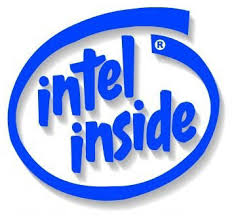
Intel has grown through several distinct phases. At its founding, Intel was distinguished simply by its ability to make semiconductors, and its primary products were static random access memory (SRAM) chips. Intel's business grew during the 1970s as it expanded and improved its manufacturing processes and produced a wider range of products, still dominated by various memory devices.After 2000, growth in demand for high-end microprocessors slowed and competitors garnered significant market share, initially in low-end and mid-range processors but ultimately across the product range, and Intel's dominant position was reduced. In the early 2000s then-CEO Craig Barrett attempted to diversify the company's business beyond semiconductors, but few of these activities were ultimately successful.
In 2005, CEO Paul Otellini reorganized the company to refocus its core processor and chipset business on platforms (enterprise, digital home, digital health, and mobility) which led to the hiring of over 20,000 new employees. In September 2006 due to falling profits, the company announced a restructuring that resulted in layoffs of 10,500 employees or about 10 percent of its workforce by July 2006.

The firm promotes very heavily from within, most notably in its executive suite. The company has resisted the trend toward outsider CEOs. Paul Otellini was a 30-year veteran of the company when he assumed the role of CEO. All of his top lieutenants have risen through the ranks after many years with the firm. In many cases, Intel's top executives have spent their entire working careers with Intel, a very rare occurrence in volatile Silicon Valley.Intel has become one of the world's most recognizable computer brands following its long-running Intel Inside campaign. The campaign, which started in 1991, was created by Intel marketing manager Dennis Carter.The five-note jingle was introduced the following year and by its tenth anniversary was being heard in 130 countries around the world. The initial branding agency for the 'Intel Inside' campaign was DahlinSmithWhite Advertising of Salt Lake City. The Intel swirl logo was the work of DahlinSmithWhite art director Steve Grigg under the direction of Intel president and CEO Andy Grove.

In the 1980s, Intel was among the top ten sellers of semiconductors (10th in 1987) in the world. In 1991, Intel became the biggest chip maker by revenue and has held the position ever since. Other top semiconductor companies include AMD, Samsung, Texas Instruments, Toshiba and STMicroelectronics.Competitors in PC chip sets include VIA Technologies, SiS, and Nvidia. Intel's competitors in networking include Freescale, Infineon, Broadcom, Marvell Technology Group and AMCC, and competitors in flash memory include Spansion, Samsung, Qimonda, Toshiba, STMicroelectronics, and Hynix.
No comments:
Post a Comment